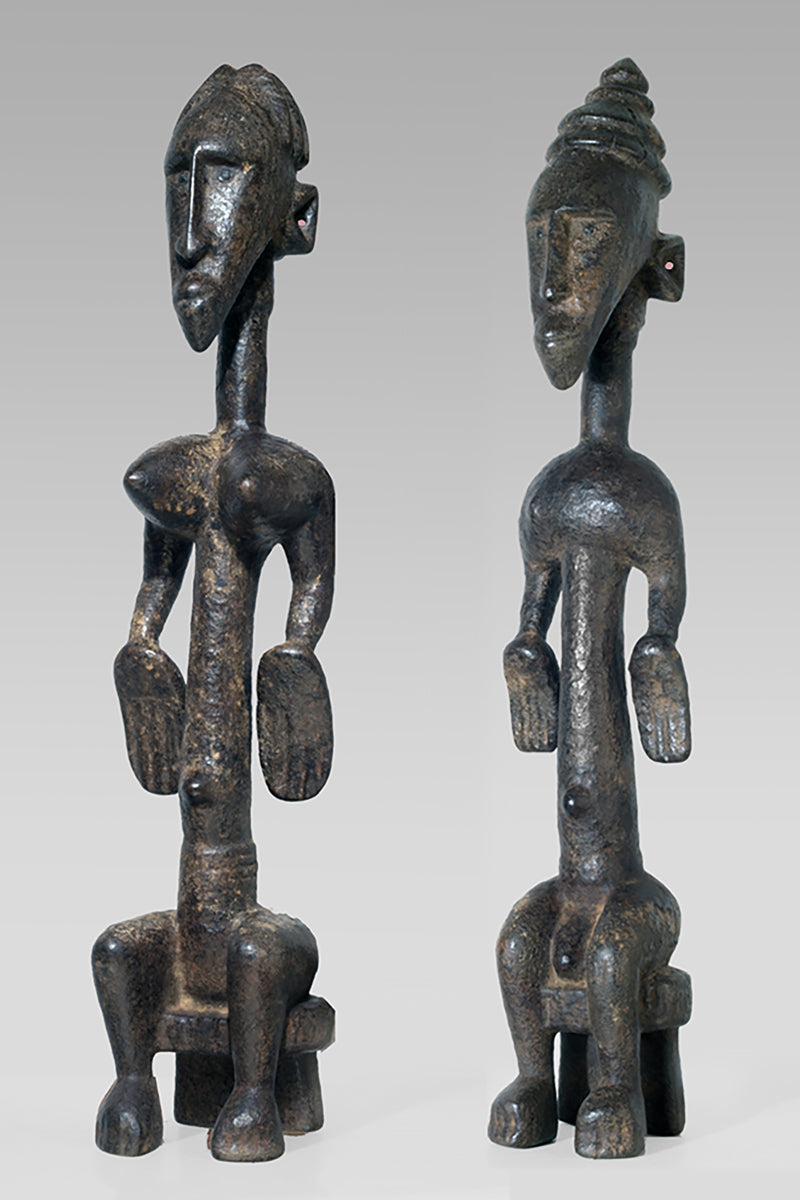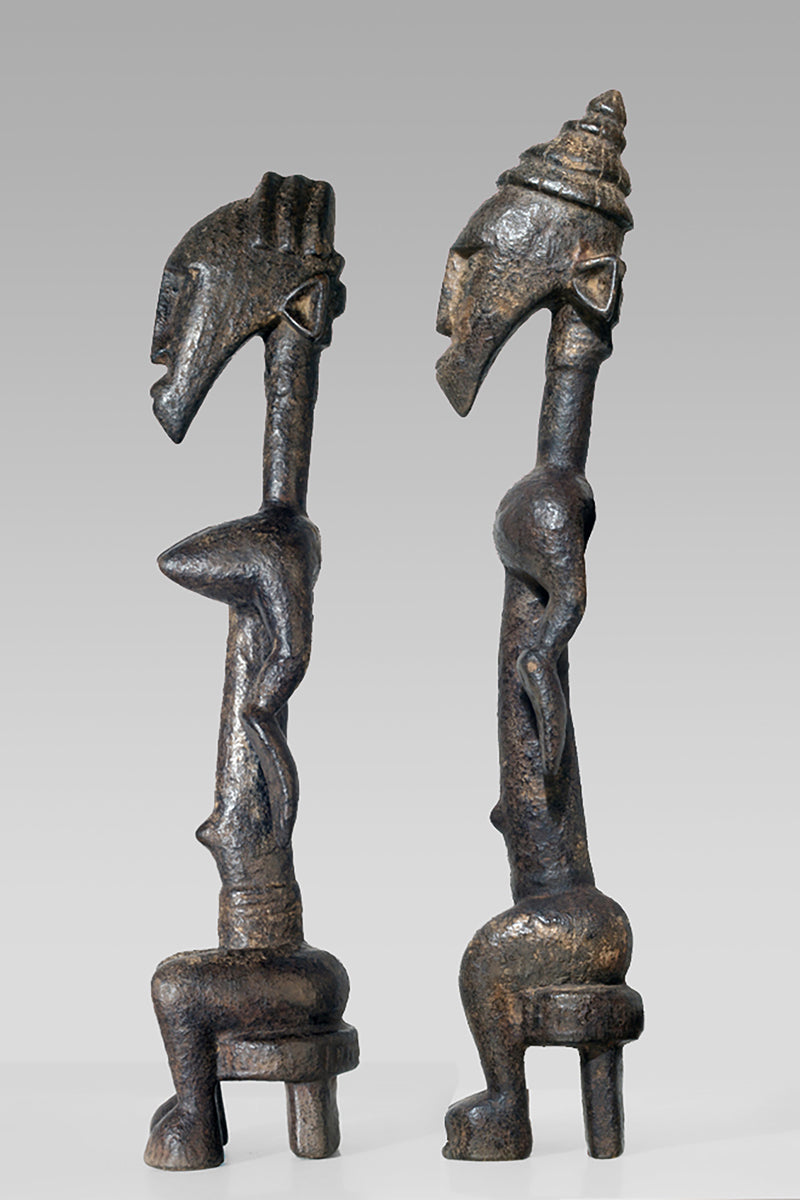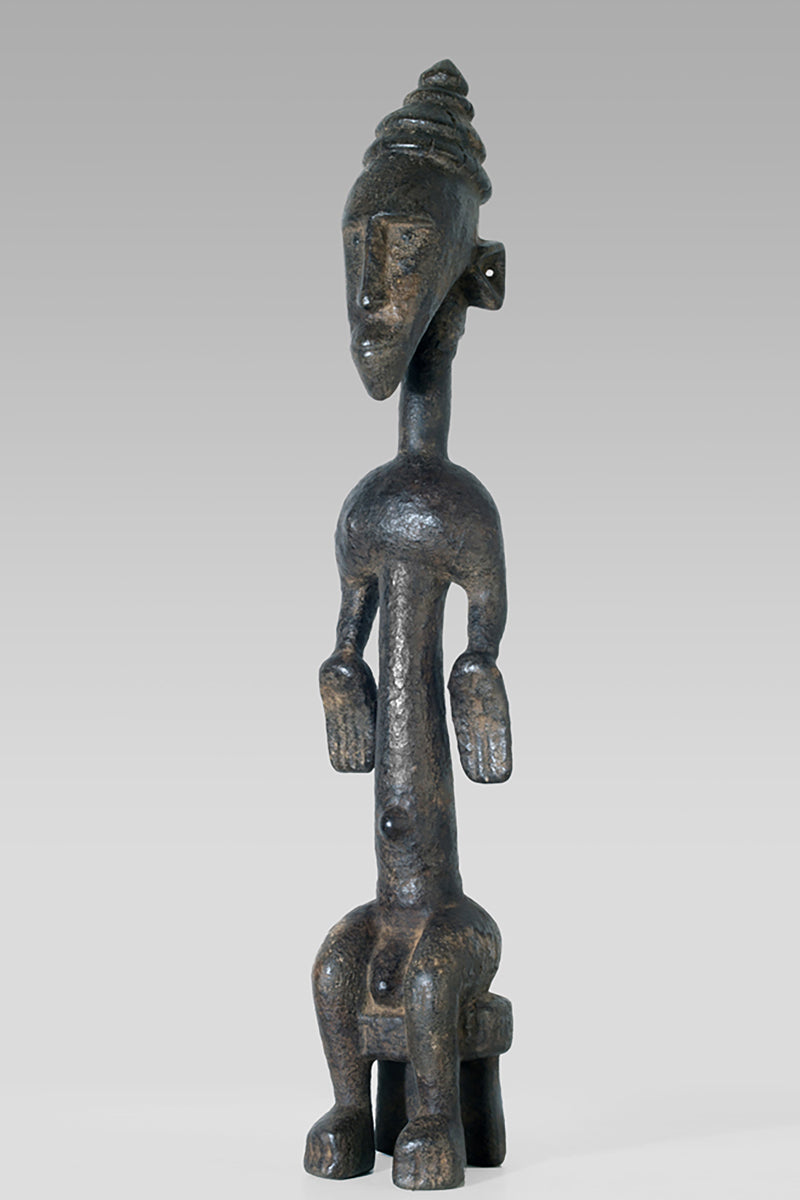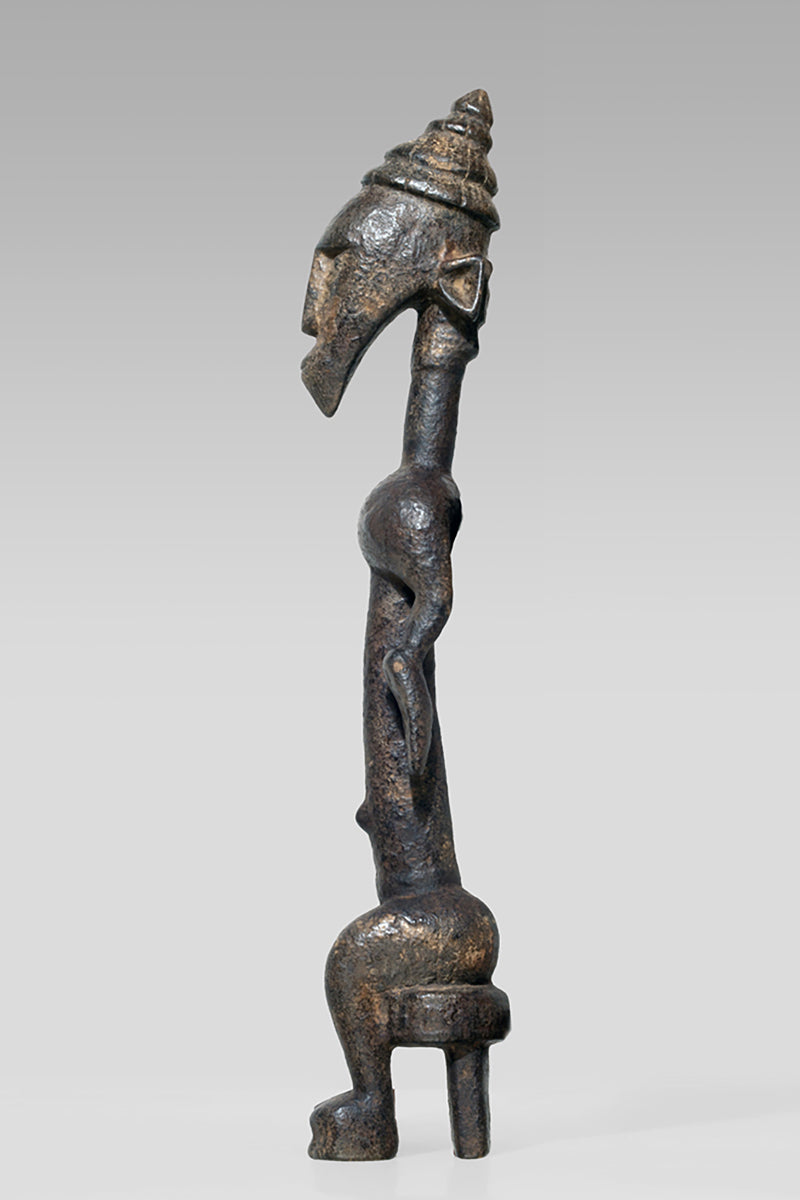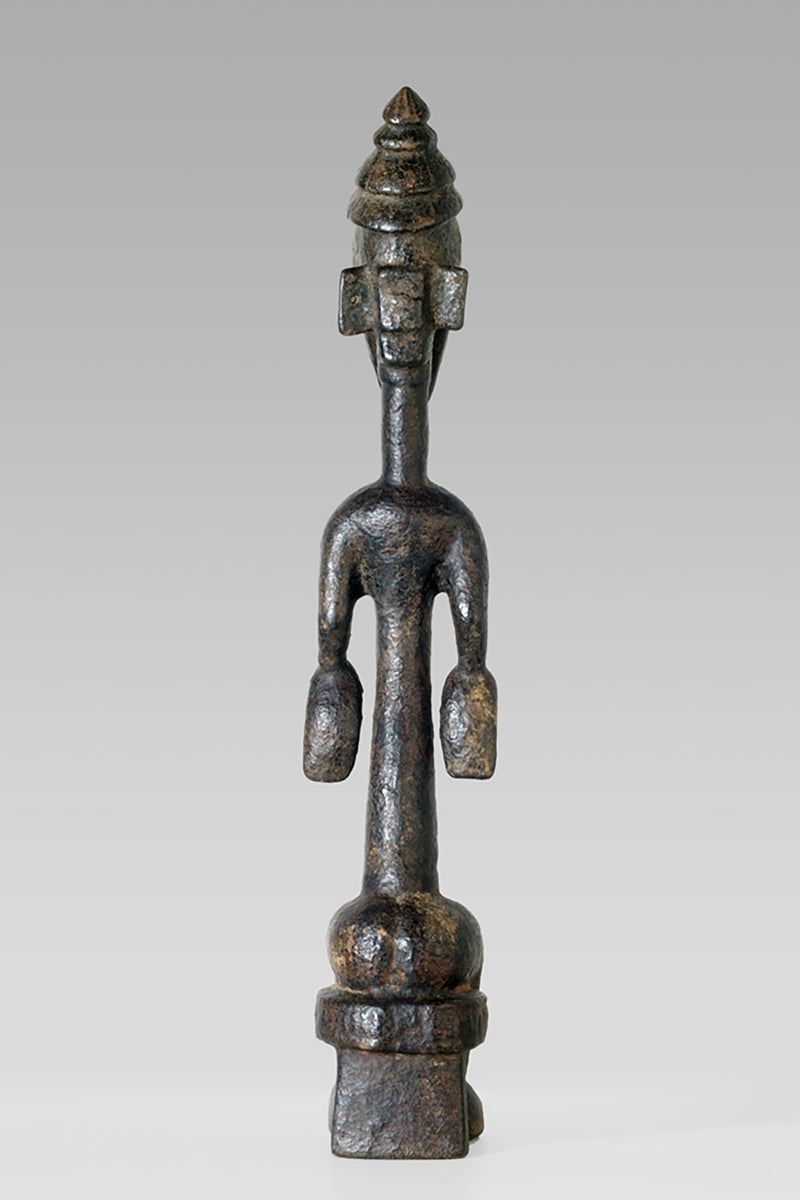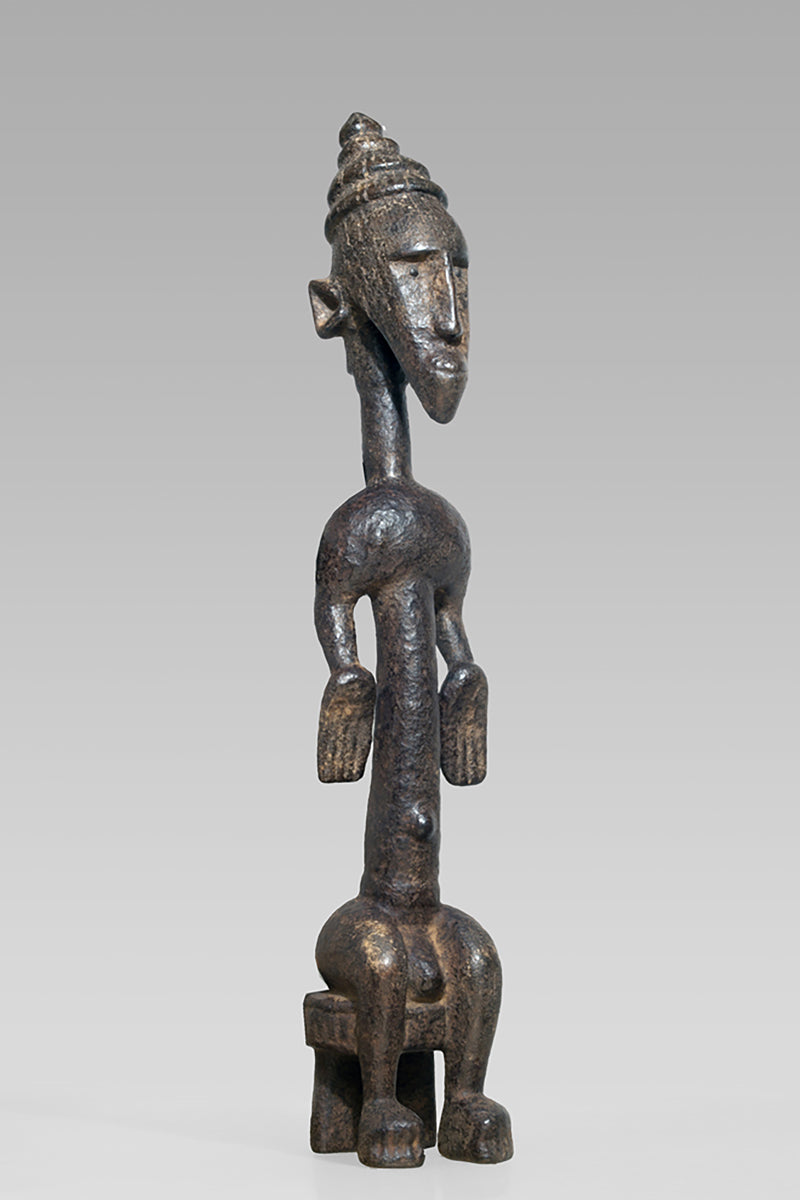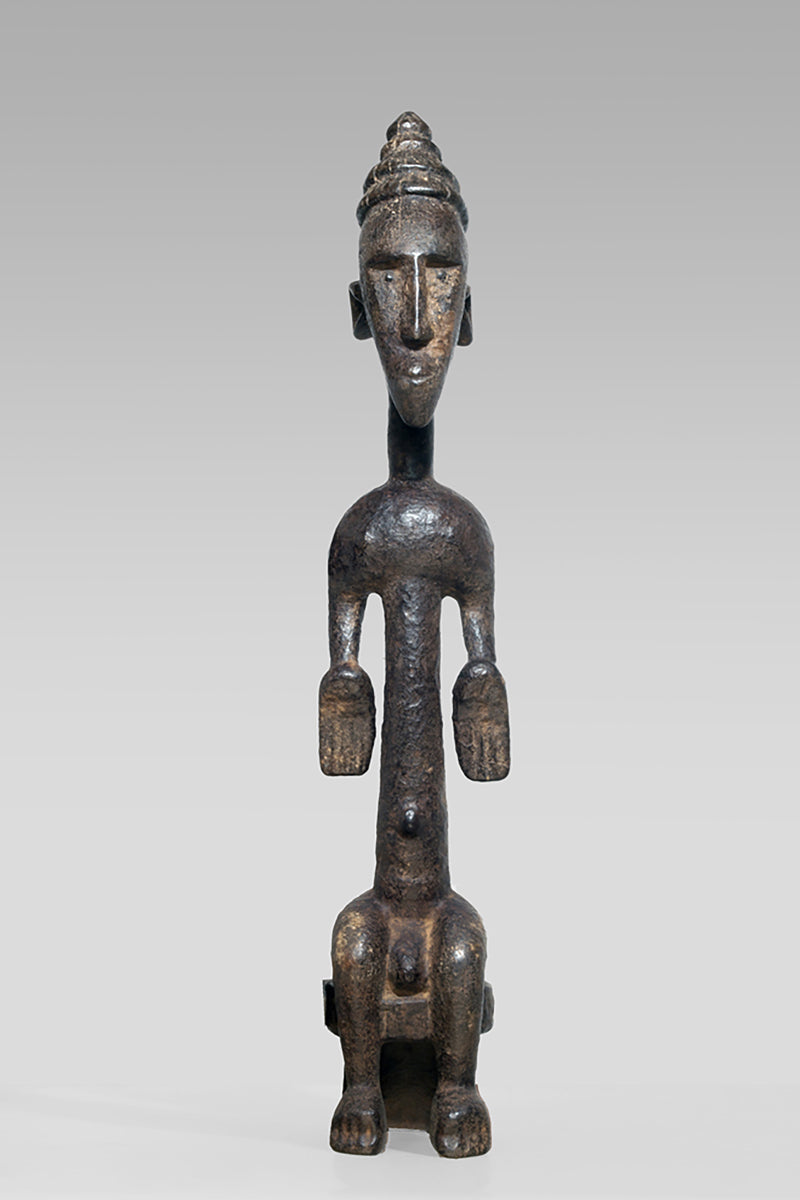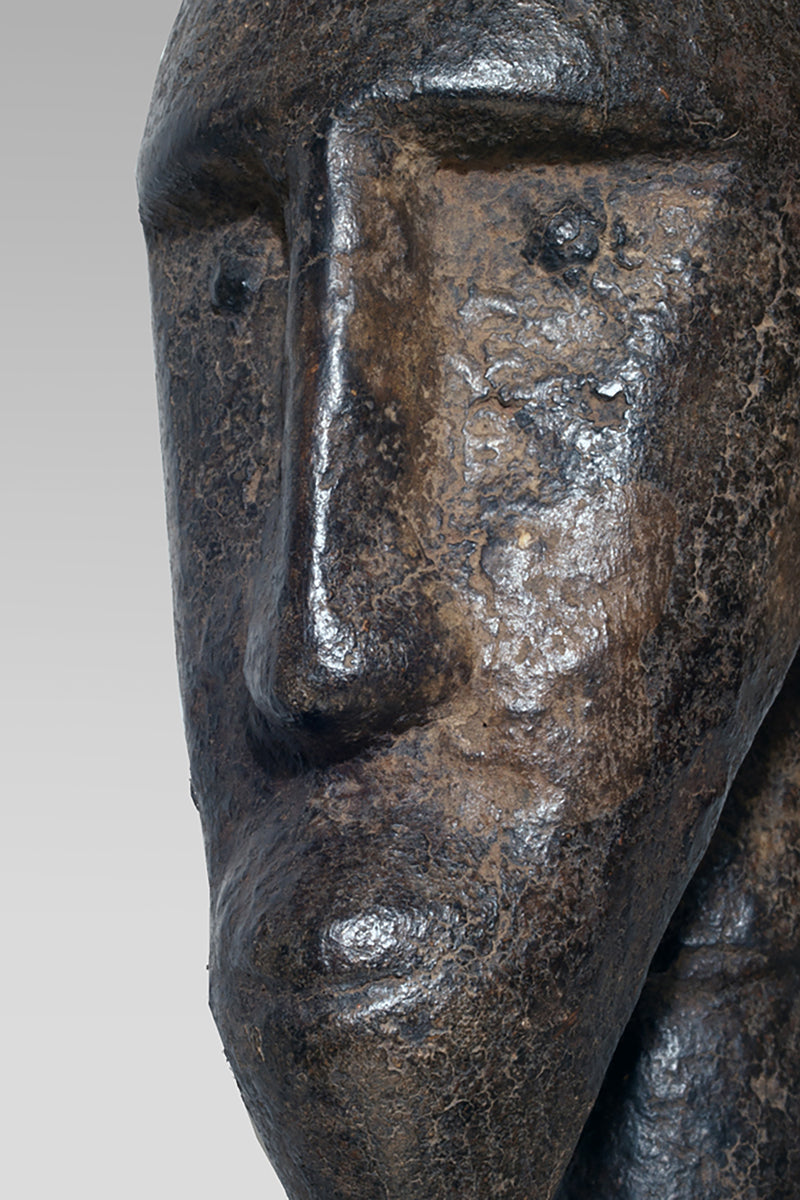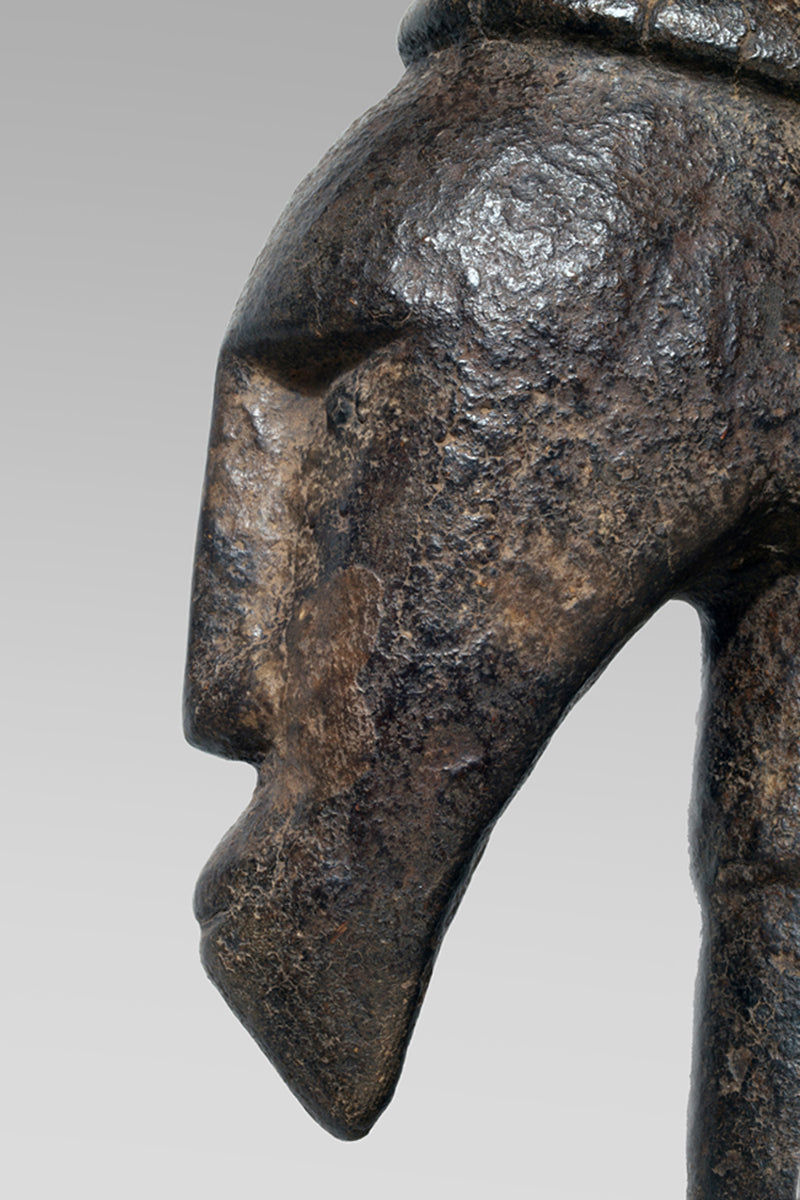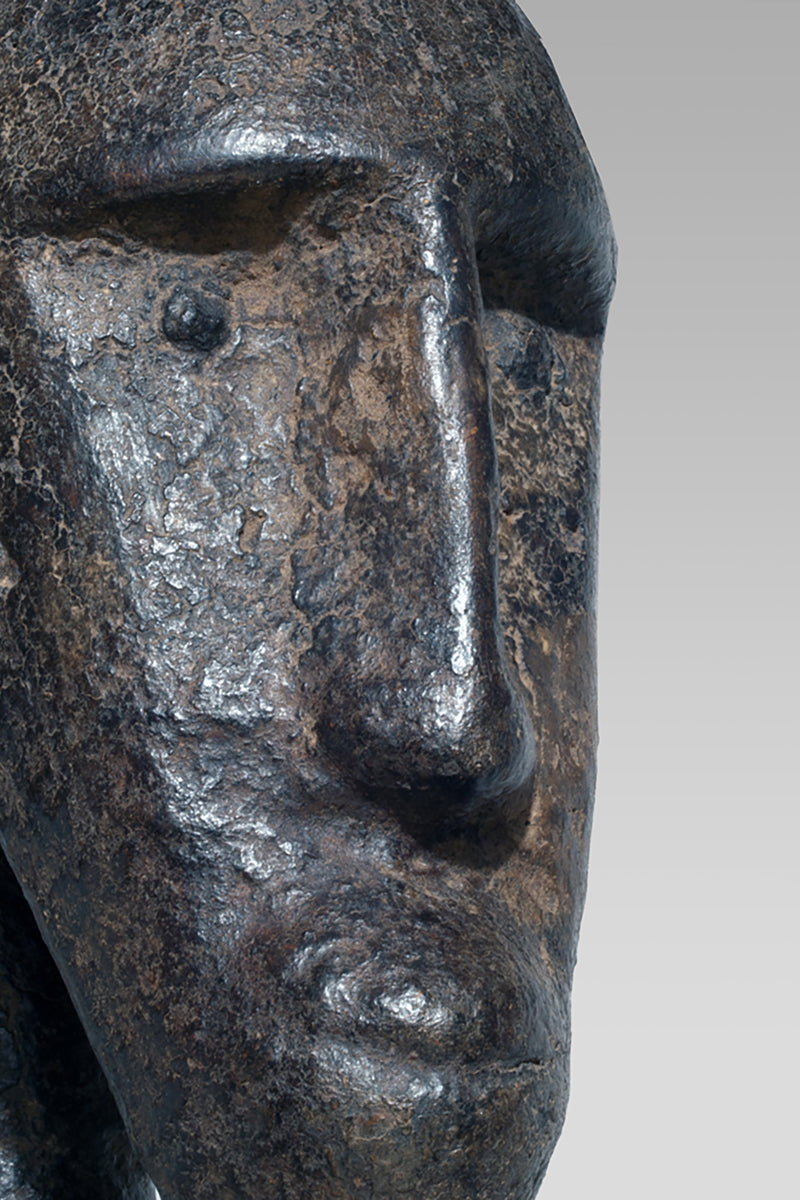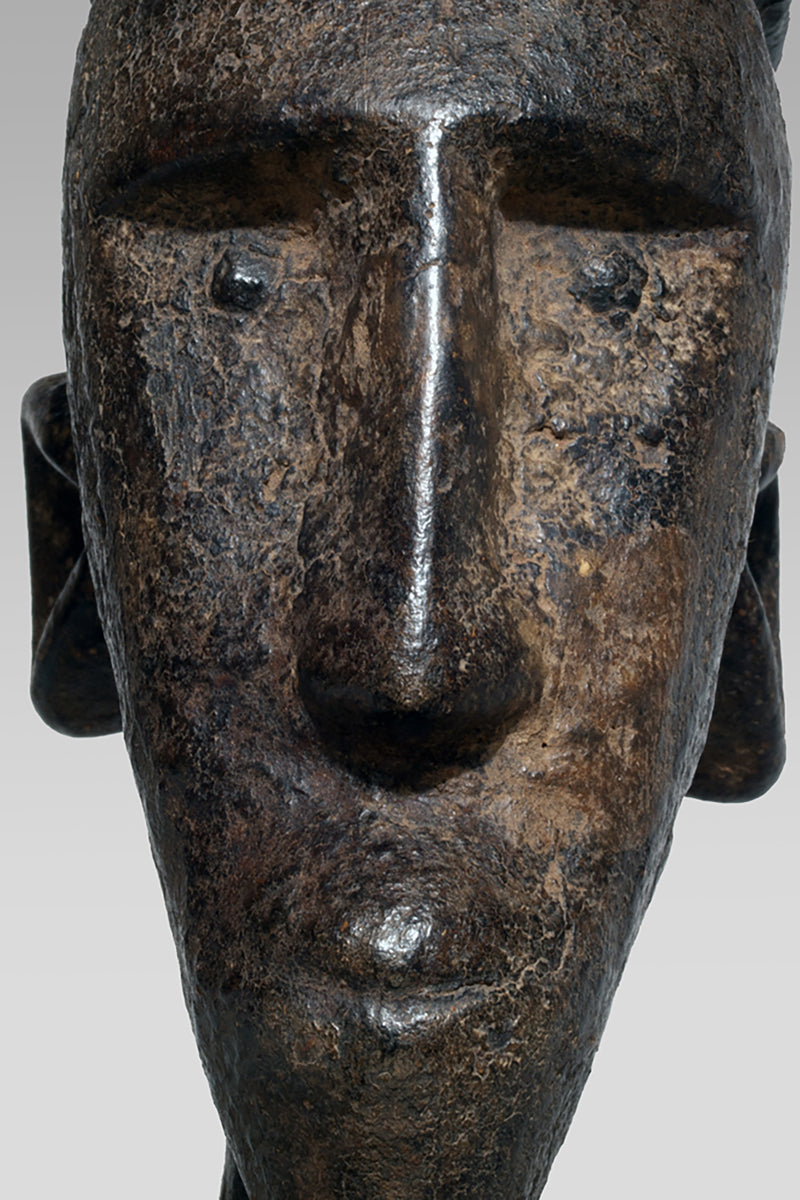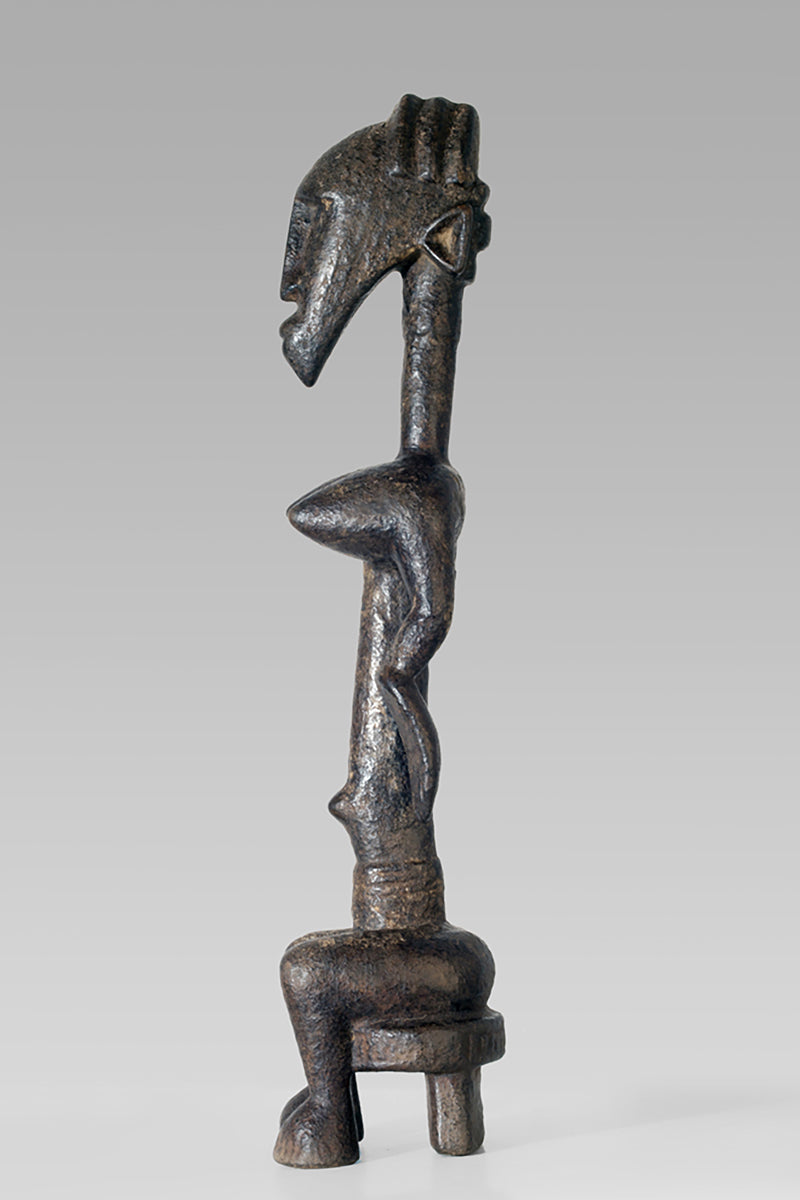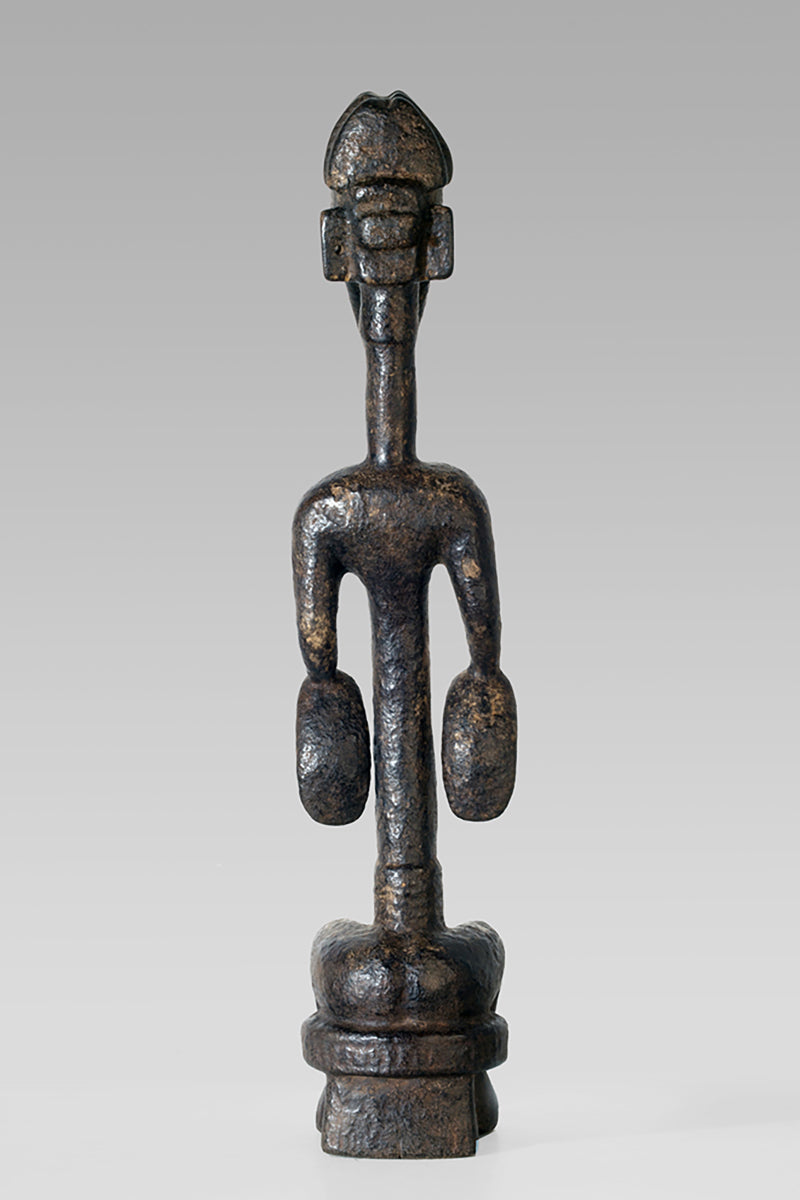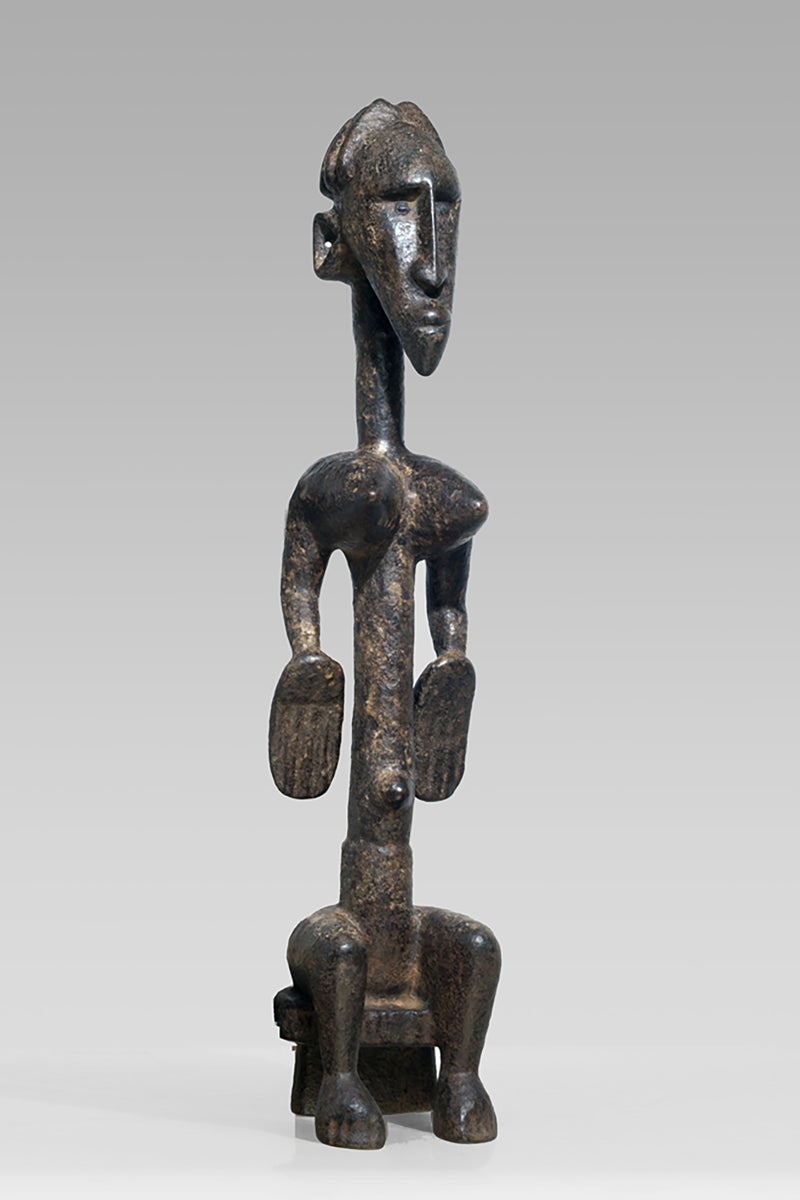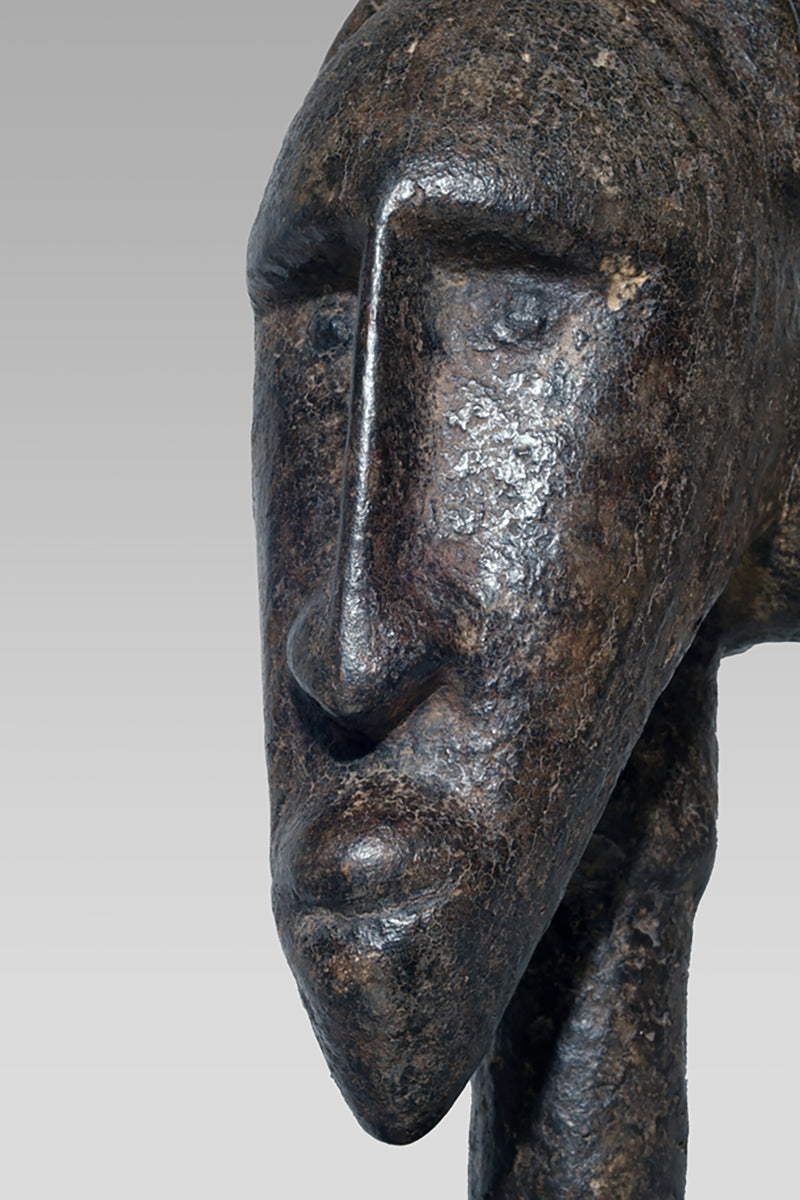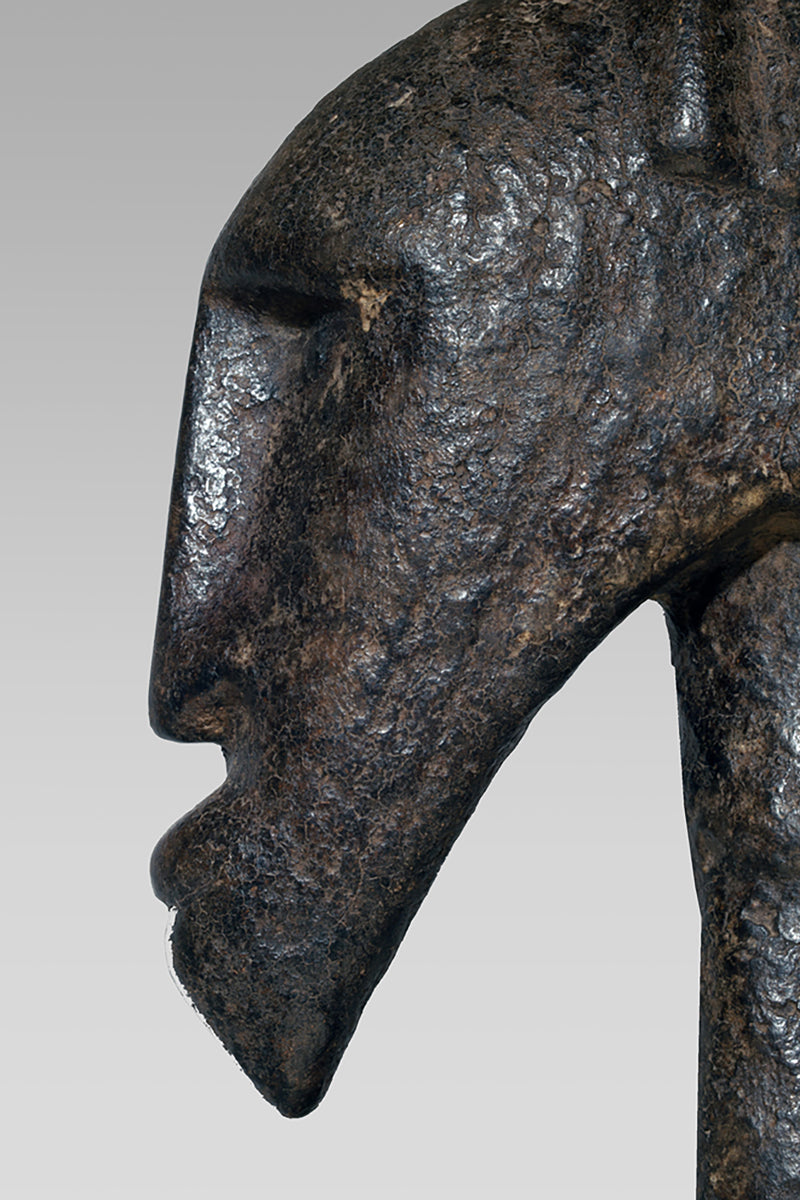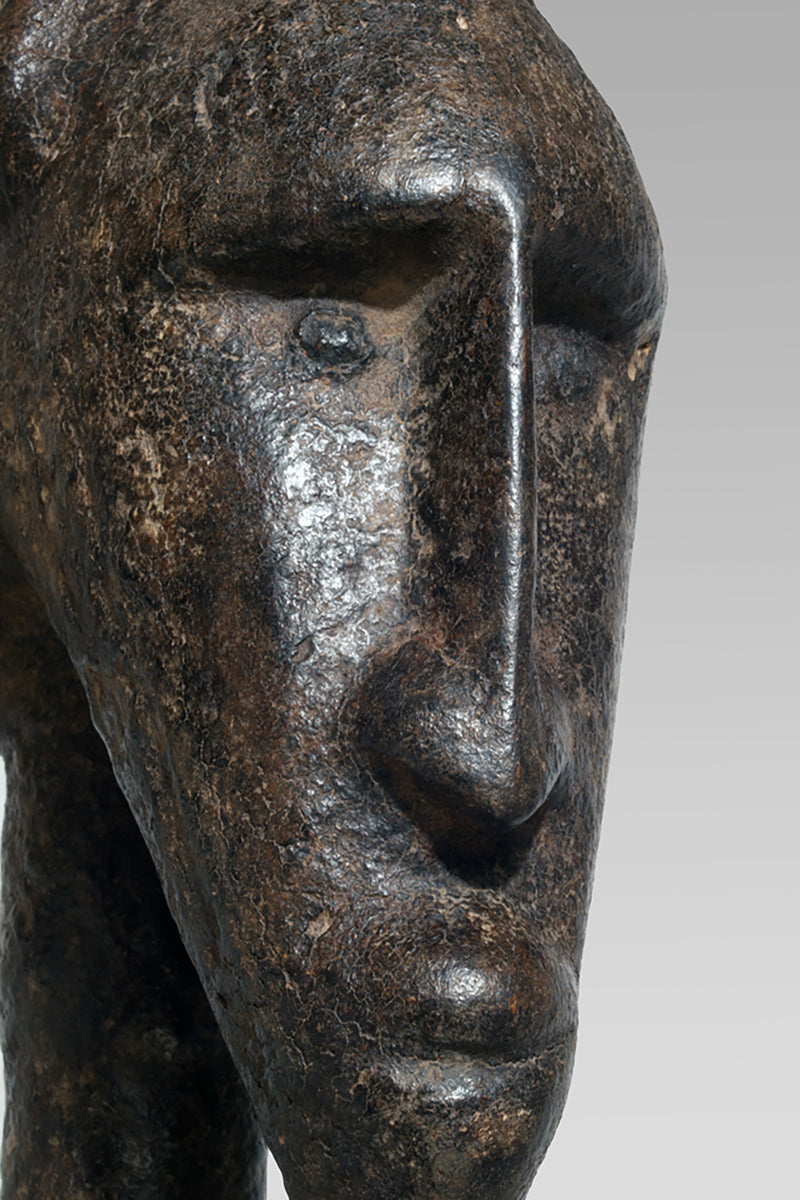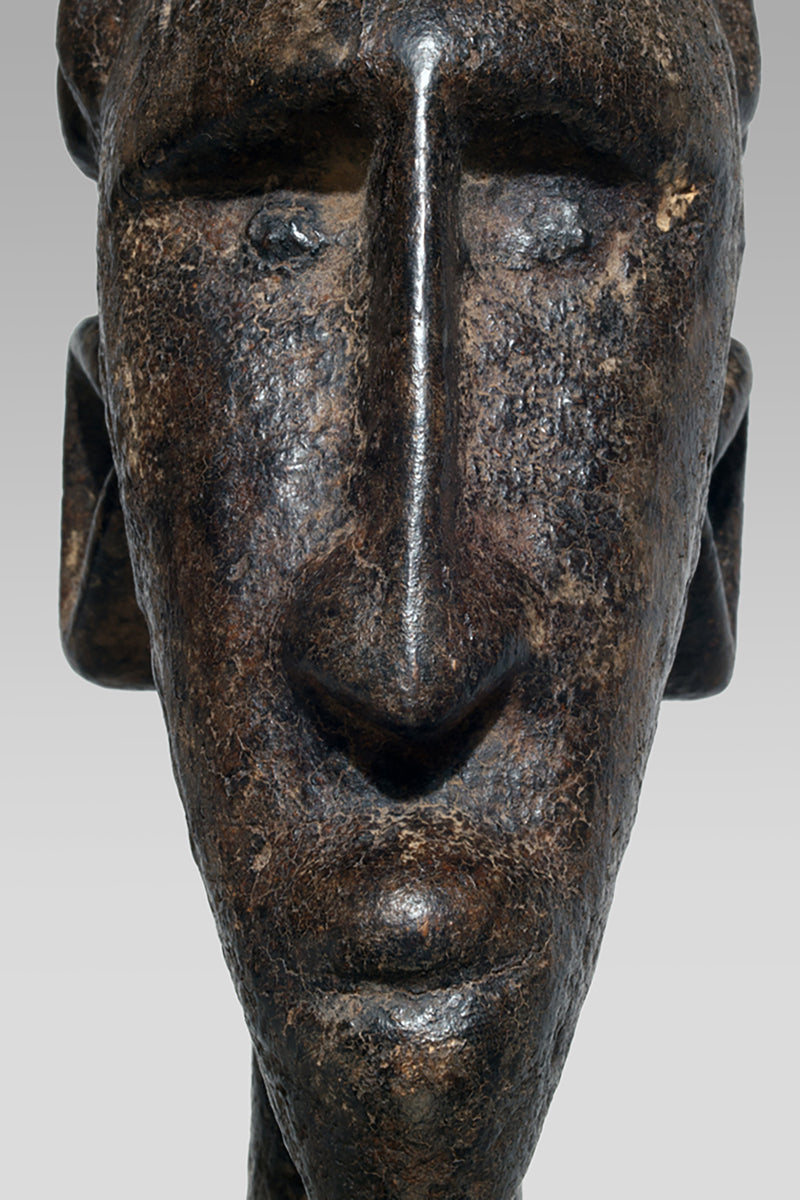wolfgang-jaenicke
A Kala couple
A Kala couple
Couldn't load pickup availability
A Kala couple of the Saro region, seated on stools; aged thick, encrusted age-patina of longlasting ritual use.
Wolfgang Jaenicke describes the wooden Kala sculptures from the Saro region as a rare and deeply spiritual expression of West African art, distinct from the more commonly studied terracotta figures of the Inland Niger Delta. In his view, these sculptures do not seek to impress with external grandeur but instead embody an inward-directed power, reflecting a strong metaphysical presence. He emphasizes that the figures are not decorative or representational in a Western sense. Rather, they are manifestations of spiritual forces and ancestral authority, shaped by a worldview where the visible and invisible are closely intertwined.
According to Jaenicke, the figures often display raised arms or abstracted anatomical forms, suggesting invocation or protective gestures. This symbolism is not merely aesthetic—it arises from a ritual logic rooted in local cosmologies and beliefs about the interaction between the living and the dead. The simplicity of form is not a lack of sophistication but a deliberate reduction to essential, potent elements. The sculptures are carriers of memory, spiritual agency, and social meaning.
Jaenicke is careful to situate these works in their cultural context, arguing that to fully appreciate them, one must resist imposing foreign art historical frameworks. He advocates for an approach that listens to the sculptures themselves, their materiality, posture, and spiritual charge. For him, Kala sculptures represent a nearly forgotten tradition of wooden statuary in Mali that deserves much more attention, both for its formal qualities and for its role in local ritual systems.
He also cautions against reading these objects solely through the lens of the global art market, which often decontextualizes them. Instead, he urges scholars and collectors alike to engage with the cultural and historical depth that these works contain. The Kala sculptures, in Jaenicke's estimation, are quiet but profound witnesses to a spiritual and artistic lineage that has survived marginalization and misunderstanding.
Wolfgang Jaenicke notes that the hairstyle of the wooden Kala sculptures is one of their most distinctive and culturally resonant features. He observes that these hairstyles are not merely decorative but serve as important markers of identity, status, and spiritual function within the communities that produced them.
In his interpretation, the elaborate coiffures often found on Kala figures reflect specific ethnic or regional styles, possibly linked to initiation or ritual roles. They may also symbolize ancestral authority or ritual knowledge, particularly when the figures are used as shrine objects or spiritual mediators. The attention given to the hair, sometimes rendered in stylized ridges or abstracted braids, suggests a deliberate intention to encode cultural information into the sculpture.
Jaenicke sees these hairstyles as part of a broader symbolic language—one that communicates ideas about social order, gender, and ritual hierarchy. In some cases, the form of the hair may be exaggerated or abstracted, aligning with the overall reduction of the figure to its most potent symbolic elements. He emphasizes that this stylization should not be mistaken for primitivism; rather, it reflects a deep understanding of how form can carry spiritual meaning.
Ultimately, for Jaenicke, the hairstyles on wooden Kala sculptures are not isolated aesthetic features. They are integral to the sculpture's ritual function and cultural identity, expressing connections to the ancestors, the community, and the invisible world.
Wolfgang Jaenicke: "The Bamana hairdress as an expression of the social ranking"
Height: 67 cm / 75 cm
Weight: 2,4 kg / 2,4 kg





















